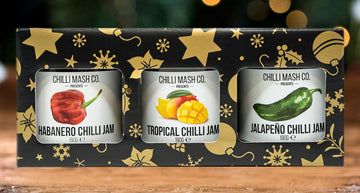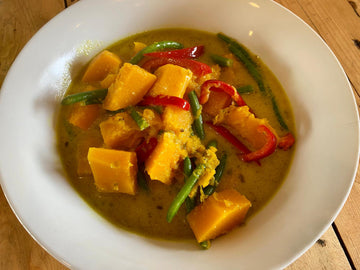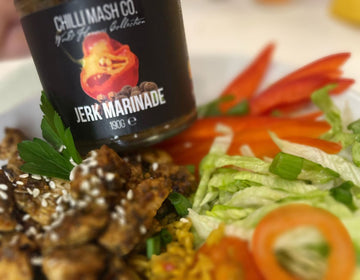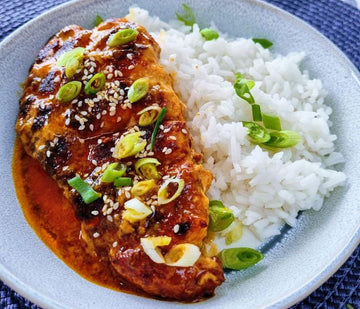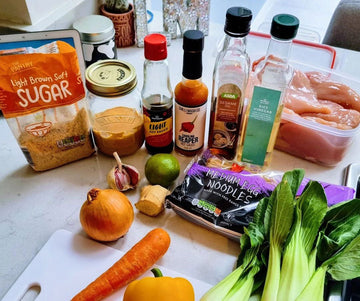The food safety basics of hot sauce creation
by The Chilli Guru on Mar 14, 2022
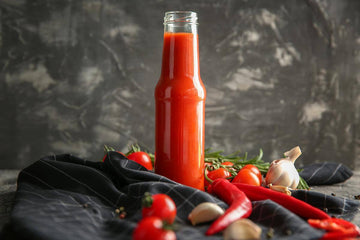
In every hot sauce there are some key factors that have to be addressed to make them safe to consume long after production.
Firstly, to pasteurise or not to pasteurise? It is perfectly possible to make a hot sauce which does not require cooking to be preserved for long periods of time. Our fermentation, oil based sauces (where oil is more than 50% of your recipe) and cold pack sauces articles (Coming Soon), which will explain how to do this.
Pasteurisation & Ph or Brix
Pasteurisation whilst a great preserver, has on its own a limited ability to preserve food for lengthly time periods. Especially in the case of a sauce which is intended to be opened and closed regularly, an additional "governing factor" is required to keep your sauce safe over time. In a domestic or small business setting, the only practical options are Ph (acidity) or Brix (sugar level).
Pasteurisation can be used to 'make safe' sauces which require a lower level of acidity (Higher Ph number). A sauce pasteurised to 88 deg C or higher can have a ph of 4.4 or lower and can be safely consumed up-to 2 years after production (Providing the sauce doesn't contain any dairy, egg, meat or fish content. With out of date sauces, one should always look carefully for signs of mould, smell and taste a tiny amount to be sure it's safe for consumption.).
Acidity
A pasteurised sauce will only contain the acidity you add to it. The act of pasteurisation kills off any lacto friendly bacteria, so it will not generate its own acidity. Traditionally lemon juice, lime juice or a vinegar are used, however it's worth noting that most citrous fruit and veg add their own touch of acidity. Passionfruit or tamarind can also be great acidifiers.
With all sauces, it's imperative to measure PH, we recommend purchasing a PH tester - the best one's currently available are made by Hanna Instruments. You can alternatively use litmus paper - however this is very inaccurate and therefore not ideal to food.
Sugar
Alternatively you can use sugar to preserve your creation - however for this to work, you will need enough sugar to preserve the ingredients - 60-70% of the overall recipe.
To measure sugar you should use a fructometer - which will measure the sugar level in Brix (°Bx).
Recipe formulation: Flavour
Observant of the points above, there are no right or wrong ways to create a hot sauce. A great place to start is to identify the flavour profile you wish to embody.
Let's say for instance that you like Cuban cuisine and you'd like to make a 'Cuban Style' hot sauce. Start by researching the flavour profile of Cuban cuisne - where you'll find that it's basically a blend of African, Caribbean, Spanish and Taino cuisines. Pick out the predominant complimentary flavours for example: Orange Juice, Lime (two great acidifiers), Chillies (mainly milder ones like Jalapeno or Cayenne), Garlic, Basil, Cumin, Salt, Pepper and possibly a dash of rum.
Play with different concentrations of each ingredient. You'll find that Salt rarely tastes good over 3% content (Unless you're a salt fanatic) and is usually 1-2%.
As your sauce will be pasteurised, it's a good idea to get the sauce warm as soon as you've added the inital liquids - keep any additional water added to a minimum as water will reduce acidity meaning more acid has to be added.
Try versions with both dried and fresh herbs as they tend to have very different flavour profiles and intensities.
Don't be afraid of the Garlic - sauces are usually only consumed in 5g servings, so garlic can afford to be forward and punchy.
When getting your acidity from Orange and Lime, have your PH meter to hand as a guide - when your Ph reads correctly (under 4.4), taste your sauce and see if you like it. To keep the flavour of the lime in the sauce, consider using the zest (outer peel not pith) which will hold it's flavour.
Once you're happy with the taste, move on to consistency.
Consistency:
Judging consistency of a sauce which is hot is an art form and not recommended for beginners. Cool a small amount of your sauce and check that you're happy with its body and texture.
Splitting sauces is a common issue; myth has it that the split liquid is the oil/vinegar/alcohol content. It's actually non of the above -it's usually water from your ingredients which has separated off and either sunk if sugary or risen to the surface if not. To fix a splitting sauce, blend it harder and cook it intensly for longer. Remember to keep stirring to avoid sticking to the pan.
Don't forget you need to hit 88 deg C for pasteurisation as the last thing before packing your sauce.
Sterilisation of your packaging
When it comes to bottling, in all instances, it's essential that your bottles and lids are sterile.
For a pasteurised sauce, you can use boiling water to sterilise the glass and lids - shake them free of water before use - however note that it's not mandatory that they are fully dry. Alternatively, you can use the oven method and bake sterilise your jars/lids at 160-180deg C for 15 mins. (Do not rinse after sterlisation as this will ruin sterility).
Packing your sauce
Once you are happy with the flavour, brix and ph you can get on to bottling. For your pasteurised sauce to seal itself inside the jar and not take on any additional bacteria, it's critical that your sauce be bottled hot - namely over 88 degrees C. This is to ensure a proper vacuum is formed inside the bottle/jar - thus preventing bacteria from entering the jar. It also will sterilise the air within the jar.
(This article is a work in progress and will be updated regularly.)
